The Corsair Carbide 400Q Case Review
by E. Fylladitakis on April 29, 2016 9:00 AM EST- Posted in
- Cases/Cooling/PSUs
- Corsair
- ATX
- E-ATX
- Carbide
The Exterior of the Corsair Carbide 400Q
Corsair went with a minimalistic refined design with the Carbide 400Q. The entirety of the case, both inside and outside, is satin black. It is worthwhile to mention that the external paint job is immaculate and that the paint is highly resistant to fingerprint marks. All of the case’s panels are flat and metallic, including the faceplate - the top of which is the only part of the case that is making a rounded edge. Measuring 46.4 cm tall, 21.5 cm wide and 42.5 cm deep (18.3 × 8.45 × 16.75 in), the Carbide 400Q is a rather compact midi ATX tower case like Corsair claims it is, falling between the SilverStone Fortress FT05 (7.5% larger) and the NZXT S340 (9.5% smaller). While NZXT managed to make their case nearly 10% more compact, we should note that the Carbide 400Q supports more parts and larger hardware parts, such as EATX motherboards.
11.2 oz (330ml) can inserted as size reference
The front faceplate cannot be opened, as there are no external drive bays anyway. Its frame is actually plastic, with the metallic plate being just a top cover for aesthetic purposes, and can be removed to clean the front filters and to allow access for the mounting of liquid cooling radiators. Corsair says that it can be simply pulled off, but that was not true for our sample: it required a lot of force to come off and that does not bode well for the longevity of the plastic mounting studs.
The front I/O ports and buttons are at the top panel, near the front side of the case. Starting from left to right, we can see a small reset button, an activity LED, two 3.5mm headphone jacks, two USB 3.0 ports and one large square power button.
A look at the rear of the Carbide 400Q reveals that the PSU compartment is located at the bottom, a common design feature as of late. We can also see the 120 mm fan, the position of which can be adjusted vertically by about one inch. There are no holes for cables or liquid cooling hoses.
One of the most interesting parts of the Carbide 400Q is the top panel, which features a magnetic cover with a narrow layer of sound dampening material. The case comes without any fans from the factory but, should the user wishes to trade acoustics with thermal performance, the top cover can be simply pulled off to reveal the perforated top of the case.
The Carbide 400Q stands on four rather tall plastic feet with rubber anti-slip pads at their bottoms. The feet are particularly tall for a case that has limited underside ventilation (only for the PSU). Although the feet can be removed, the 400Q is designed to function with the feet attached - the PSU intake will be blocked and the furniture will be exposed to many rigid objects that can cause damage. The PSU intake has a nylon filter that can be removed from the back of the case.


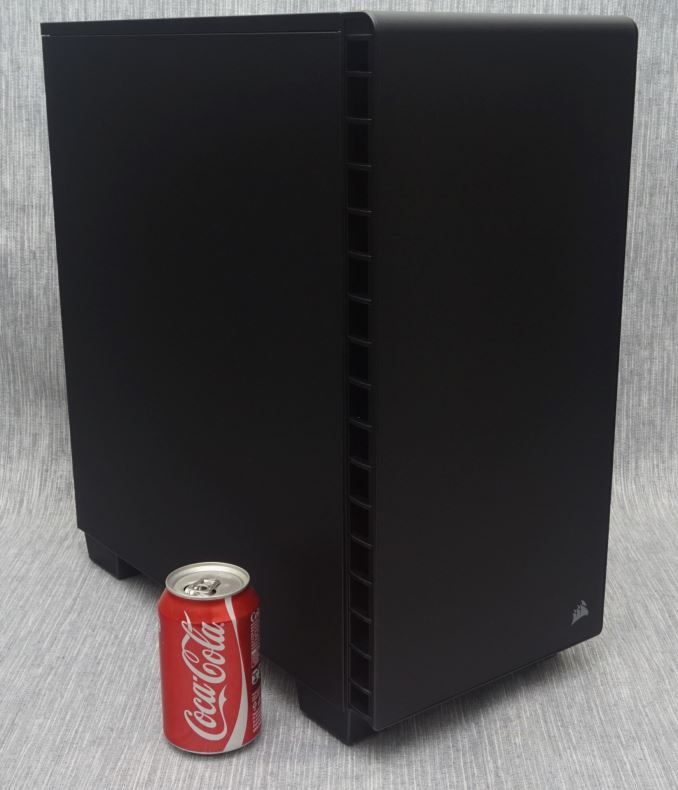
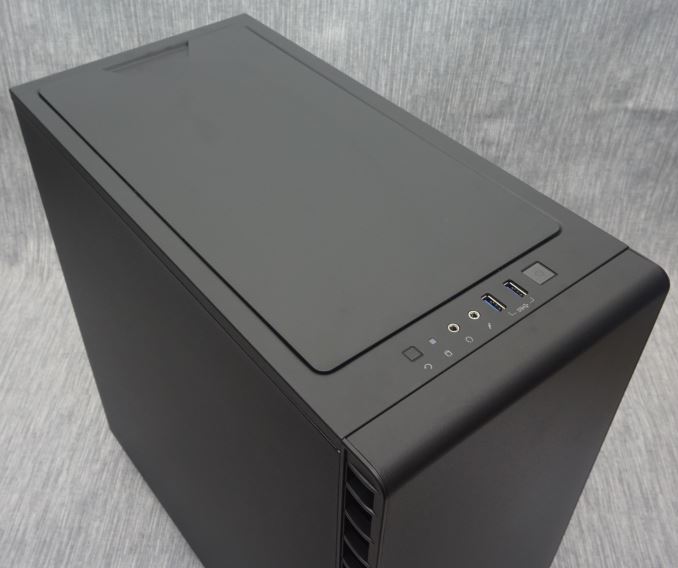
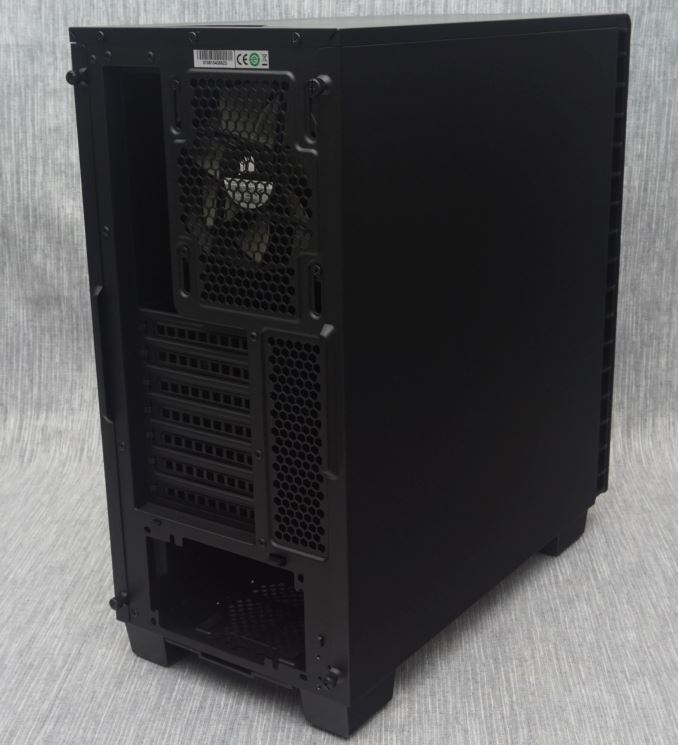
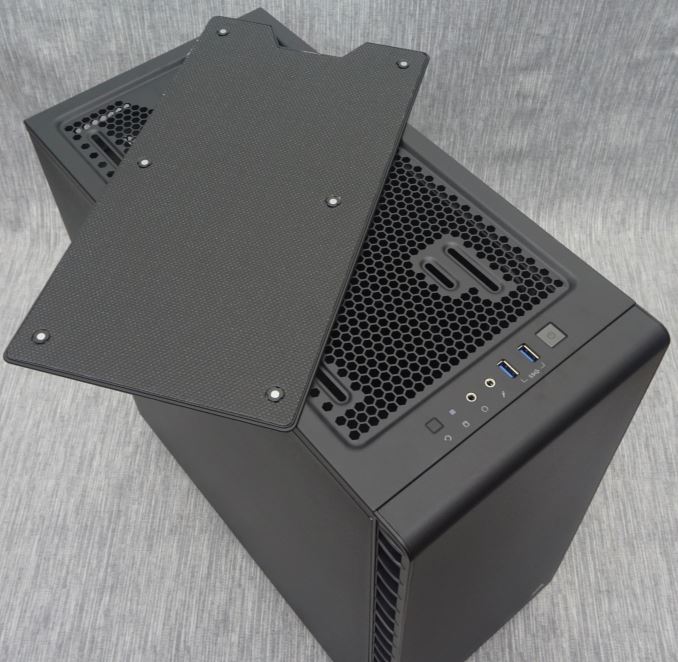
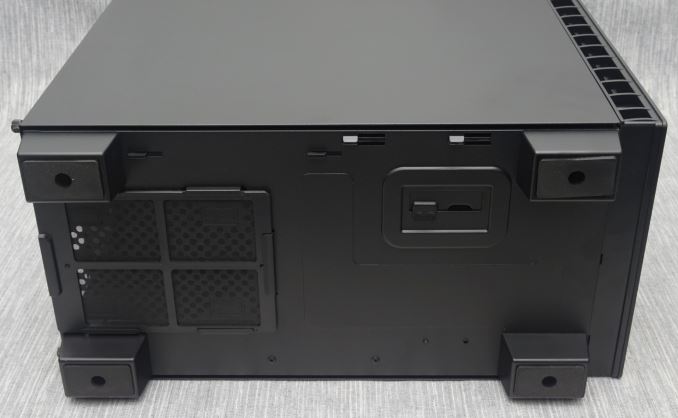








63 Comments
View All Comments
niva - Friday, April 29, 2016 - link
My Antec TITAN 650 is still in use, I don't think I'll ever need/want another case for a workstation... but yeah, it does make my back hurt thinking about it :)kmmatney - Friday, April 29, 2016 - link
I am still using my P182 from 2007. I'm been wanting to replace it for the last 4 years, but always spend the money on cpu or video card upgrades instead. I clean and oil the fans 3 years or so, and still have the originals. About the only thing that wears out on a case (besides the fans) are the front USB ports, and mine barely work. There are no 2.5" drive mounts, so my 2 SSDs are mounted with tie straps. It's big and heavy, but virtually silent, and keeps everything cool. I hate the stupid divider between the motherboard and PSU compartments, but other than that it's still a nice case. I've always felt monitors and cases are worth spending a little extra on, as they can last so long.Valantar - Sunday, May 1, 2016 - link
What happened to Antec, really? Ten years ago, they were the bee's knees when it came to stylish, quiet, high-performing cases. These days, they're hardly relevant at all. I remember when the Fractal Define R3(?) first came to market, and everyone was raving that "it's a P180 for half the price!" Did Antec's R&D department die of shock? The P280 looks half decent, but it's huge and unwieldy, and has some odd solutions. The P183 looks like it was designed in 2005, and is hideous compared to the P180. Don't even mention the P193. And their other cases? Blergh.Jeff7181 - Friday, April 29, 2016 - link
No external 5.25 inch bays? Really? Optical media is not THAT dead...jardows2 - Friday, April 29, 2016 - link
I would think without the 5.25 bays, it could have been designed a bit smaller. Wouldn't fit EATX that way, but not sure there is a big market for enthusiast EATX motherboards and compact cases like this.Black Obsidian - Friday, April 29, 2016 - link
There isn't really much space to be saved without sacrificing other use cases. Making the case less tall or less wide isn't really possible, as there's already no slack room to speak of. Reducing depth by more than 1" means sacrificing front-mounted radiators, long video cards, or both.Compared to, say, the Corsair 450D, the 400Q already trims 2.8" of height and 1.3" of depth. It's 0.2" wider, but that's just as well, given that the 450D was a bit tight on space for cables behind the motherboard tray.
Realistically, if you want a smaller case, you'll have to accept the mATX form-factor, with the trade-offs that entails.
jardows2 - Friday, April 29, 2016 - link
Even with mATX, it seems that any case forgoing the 5.25 drives do not make use of that deletion to save space. The cases either have the 5.25 drive bays, or might as well due to the size. It isn't until you get to mITX sized cases that the space savings gets fully realized, and even then, there are some rather large mITX cases.Black Obsidian - Friday, April 29, 2016 - link
You *are* saving space by forgoing the 5.25" drives, though. Look at my comparison above; the 450D has 2x 5.25" bays, which together are 3.2" tall. The 400Q omits those, and is 2.8" shorter. There's literally no more space to be saved, because the interior height is the sum of ATX PSU + ATX motherboard + 25mm top fan.To get any smaller while still supporting the same basic component set would require Time Lord science.
jardows2 - Friday, April 29, 2016 - link
I compare this to my NZXT Source 210 case, which, I know, is a budget case. This Corsair is taller and wider than my case by about an inch each way (height difference may be simply the large feet of the 400Q). It is about 3" less in depth. For that mere 3" of depth, I lose 3 5.25" external bays, and 3 internal 3.5" bays. I would think that it would be possible to make an even more compact ATX case than the 400Q with the elimination of the 5.25" bays.Ninhalem - Friday, April 29, 2016 - link
Grab an external optical drive if you need one that badly, or go for some of the higher end carbide or obsidian series for the 5.25" bay. Media consumption is almost exclusively streaming now.